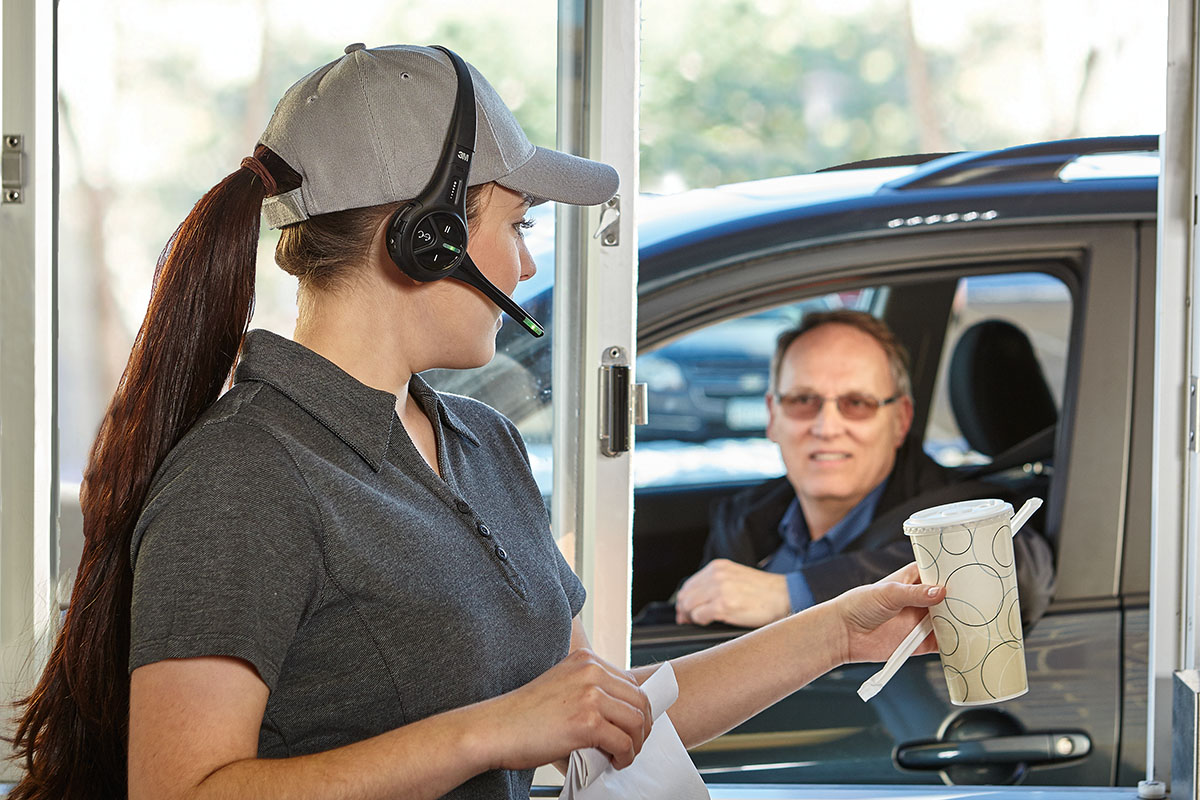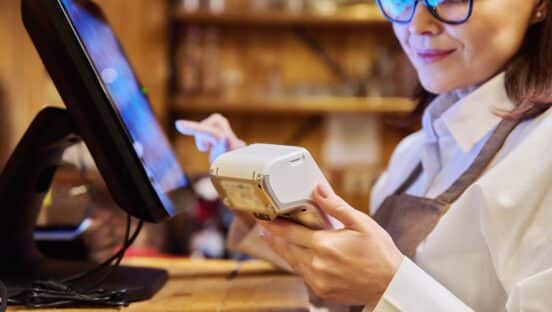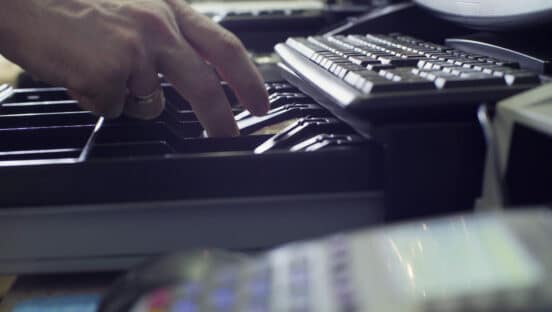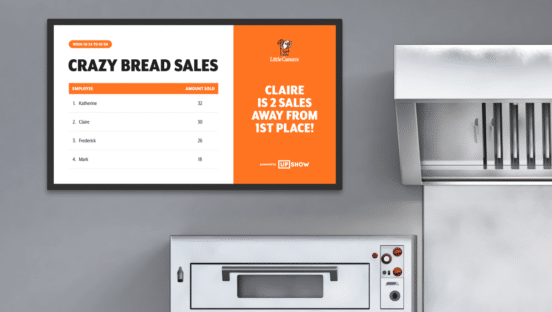Sponsored by 3M.
With the bulk of quick-service restaurant sales occurring through the drive-thru window, it’s no wonder drive-thru efficiency is a top-of-mind concern for industry leaders. Not only is the drive thru a major source of sales, but it’s also a high-impact guest touchpoint, since it’s the only place restaurants interact with customers who choose to eat off premises. The better and faster the service, the better the payoff for the restaurant.
“Drive-thru efficiency is so important because every extra car through the drive thru translates to additional dollars for the operator,” says Joseph Ciampi, U.S. sales manager for 3M Commercial Solutions Foodservice Supplies and Communications.
It’s not just dollars earned that makes drive-thru speed so important—it’s also about cost savings. “When drive thrus operate at peak efficiency, restaurants can manage more business with the same team and expenses,” says Mark Hunter, global portfolio manager for 3M Commercial Solutions Foodservice Communications.
“If your current staff can handle 90 cars, by implementing a few modifications you can increase that to 100 cars with the same staffing, ultimately cutting costs per dollar earned,” he says.
“Those modifications can be simple. In many cases, improving communications can boost drive-thru efficiency, since high-performance audio and clear voice transmission can reduce order errors and ensure staff can hear orders correctly the first time,” Ciampi says. Yet traditionally, this high-quality audio has come at a price. Not only was it expensive to invest in sound quality upgrades, but maintenance costs were also high.
“When one component breaks on a traditional all-in-one headset, the entire headset is out of service, and the business has to operate without it while it’s sent away for repairs,” Ciampi says. “Many companies offer maintenance programs for a monthly fee, but those fees can become very costly.”
Today, advancements in drive-thru headset technology are improving audio quality while reducing overall cost of owning a headset system. Take the 3M™ Drive-Thru Headset System G5, for example, an all-in-one system offering smart features with reduced maintenance costs.
Not only does the G5 feature high-performance audio with noise reduction through its headsets, but it also offers a headset charging station which allows staff to keep track of the equipment and provides a central location to store the headsets minimizing lost or damaged when charging.
“The G5 system has a modular design, which enables in-store headset repairs and saves maintenance fees by reducing the number of service repairs done by the repair center,” Hunter says. “You can service the G5 headset in-store for $120, saving up to $60–80 per headset, compared to traditional maintenance repairs. For example, if your store has five headset systems that need repairs in a year, you’re saving $400–500 per year. With the G5 modular design you are not only saving money but time—it only takes 10 seconds to swap the headset carrier and you are up and running in no time. The equipment never leaves the store and you have control and access to the headsets.
The G5 system added features—such as the audio alerts that can be used to pre-warn the operator when headsets need to be charged—create efficiency for restaurant operations and reduce downtime. The alerts can also be programmed to give audio reminders, such as directing employees to check the dining room, restrooms, etc. With easy-to-use touch buttons, a light headband designed for comfort and color-coded ID tags that allow headsets to be assigned to specific employees for hygiene purposes, the G5 system’s advanced features and versatility can help in many ways.
Furthermore, the system is backwards and forwards compatible, so restaurants can begin upgrading their systems over time, or they can invest in it now and expand later. For example, if a brand plans to install a second drive-thru lane later, the existing G5 system can be programmed to serve a dual lane model instead of requiring the operator to purchase more hardware.
“The repair savings alone are a big help to restaurants,” Hunter says. “It’s also competitively priced and provides many benefits in terms of restaurant efficiency. At the end of the day, the G5 system is a great value for its cost; it provides a comprehensive and reliable communication solution for the foodservice industry.”
By Peggy Carouthers













